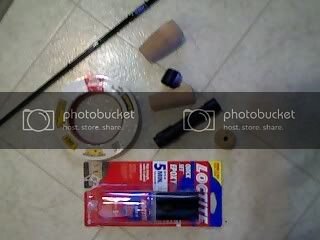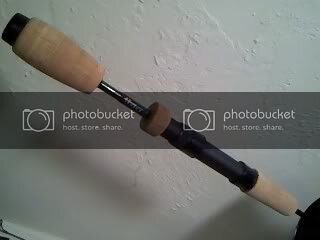xltom said:
The rod is IM6....Anyone know what that means???
here is a complete run down as posted by 2 Rod builders.
The first thing you should know is there is no industry standard for IM6, IM7and IM8. Rather, it’s a “range” that manufacturers use to classify their rods according to the “modulus” content. Modulus is a term that describes the stiffness to weight ratio of the graphite that’s used to create the rod blank. Here’s how it works….when you cast a lure, the rod flexes with the weight of the lure, storing energy as it flexes. When the motion of the rod stops, the rod flexes and releases all of its stored energy to propel the lure. When you increase the modulus of the graphite, you increase the ability of that graphite to store and release energy. You also increase the speed that the rod releases the stored energy. That in turn, increases the lure speed that is generated in the cast. Increase the modulus and you increase the reaction speed and power of the rod blank.
Below is a general example of modulus ratings using G Loomis classes:
GLX - 65 million modulus
IMX - 55 million modulus
GL3 - 47 million modulus (IM8)
GL2 - 42 million modulus (IM7)
IM6 - 38 million modulus
Standard Graphite - 33 million modulus
Unfortunately, increased modulus results in increased costs. The highest modulus graphite material costs as much as ten times more than standard graphite. The drawback with increased modulus is the rod blank tends to be somewhat “brittle” and more likely to break from impact fracture, such as dropping the rod on a hard surface. If you tend be abusive with your gear, it would be wise to back away from the top modulus rods and choose something in the mid range that will offer more durability. Before you purchase a rod, especially the high priced, high modulus, be sure that it is backed by a lifetime warranty.
Graphite is the most common rod material today, and is the lightest and strongest material. However, there are many varieties of graphite, depending on manufacturing quality and process, and thus graphite rods range widely in cost. Graphite rods, especially higher-end models, tend to be thin and a susceptible to breaking if they are chipped, scratched, or cracked. Lower-end graphite rods, these days, are probably almost as durable as fiberglass rods. Most high-end rods have lifetime warranties, partly because they do tend to break more often. Below are some explanations of rod materials:
From Ralph Heidecke: Types of Graphite (IM6 etc) [from Brian Costlow, posted this back in April 1998]
IM6 is a 'Grade' of Magnamite, a graphite product of Hercules Inc. BASF makes a similar product, as well as others. The important thing about IM6, IM7, IM8 ratings for fishing applications is the tensile modulus. Most dept. store rods that are graphite composites are around 30-35 million psi tensile modulus. The IM is a shorthand for that tensile rating. IM6 = 40 million IM7 = 41 million IM8 = 45 million Tensile modulus briefly is: (Courtesy Owens-Corning) "When a bar is pulled in tension, it has to get longer. The tensile modulus is used to calculate how much longer it will get when a certain load is applied to it. Units are normally millions of pounds per square inch. Higher numbers indicate materials which will not elongate as much as others when they are being compared under equal tensile loading conditions." That elongation, or elasticity, is what allows the rod to spring and bend back.
So (grossly oversimpifying) a rod made of IM6 can be built with similar strength and flex characteristics to a rod that uses cheaper material, while making the tube wall thinner, which in theory makes the rod lighter and more sensitive. On the other hand, just because a rod is built using IM6 does not mean it's a great rod. Exactly how the material is laid up in the blank, whether any other material (other graphite composites, fiberglass, aramid and gel-spun polys for instance) the taper, length, all go towards making a good blank. These things also affect the action (fast or slow taper). Then to make a good rod, you have to worry about the seat and handle, and how it's connected, guide material and so on.


